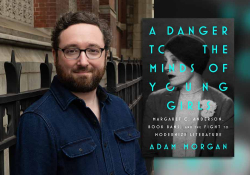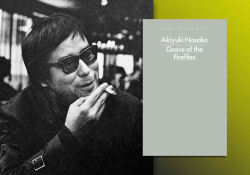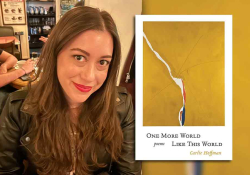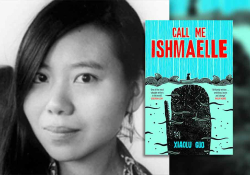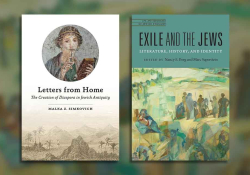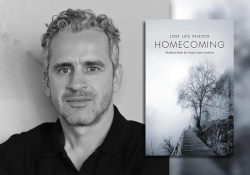Mohammed Choukri: Faces and the “Arabized” Amazigh Writer

Mohammed Choukri’s book Faces has finally been published in an exquisite translation by Jonas Elbousty. Published by Georgetown University Press, this translation is a continuation of this dynamic translator’s sustained endeavor to make Choukri’s oeuvre available to anglophone readers.
A collection of short stories, life writings, and a mixture of both, Faces is above all a journey into the lifeworlds of a writer who has for so long been pigeonholed into the box of marginal writing at the expense of his discernible multifacetedness—a writer who contended with colonialism, articulated a postcolonial consciousness avant l’heure, and wrote the periphery into the center of elite culture. Contrary to most assertions, Choukri was, I would argue, anything but a writer of the margins. His characters depict what happens in bars, cabarets, and hotels, which were and still remain inaccessible to truly marginal Moroccans. Therefore, it is high time that Choukri was read as an author who unveiled the repressed desires of a section of Moroccans who escaped social and religious inhibitions by finding refuge in these exclusive locations. In this sense, Choukri, despite his origins from the periphery, is not a peripheral writer. He was a writer who knew how to excavate his co-citizens’ ailments and lay their social hypocrisy bare for every reader to see. As I will show in my discussion of his relationship to Tarifit (his Amazigh mother tongue), Darija, and Arabic, there is more to Choukri’s literary legacy than the decades-long scholarly focus on sex, alcohol, and bohemian life.
Despite his origins from the periphery, Choukri is not a peripheral writer.
Born in the Rif in northern Morocco in 1935, Choukri left his forlorn village with his family for Tangier to escape famine at age seven. A deadly drought struck Morocco during World War II, causing a terrible famine that Moroccans still remember as “‘ām al-rūz” (the year of rice) or “‘ām al-jū‘” (the year of hunger). Choukri considered himself one of “the sons of the Riffian famine” who left their villages in the early 1940s to escape death. According to Choukri, some of these emigrants “went to Algerian cities, namely Oran, while others went to northern Moroccan cities, especially Tangier.” His dislocation from his native village and entry into the unwelcoming Tangerine social order was nothing short of a traumatic transition that he would attempt to work through in his various writings. Given the centrality of trauma in his experience, his excessive drinking, sexual revelries, and strong fixation on social justice may be read as acting-outs of traumas that he was reliving in order to overcome them—a fact that is supported by his return at the end of Faces to some reflections on death and weakness in old age, enunciating that “All I recall of my sorrows are the things that soften their roughness and urge me to remember their more pleasant facets.” Faces concludes with the prophetic statement “We are how we become,” which centers the process of becoming and challenges the fixity of being. Hence, even if Choukri came of age in the sociocultural and linguistic margins of Tangerine Morocco, his process of becoming unfolded at the center of multilayered and transnational intellectual and literary communities.
Faces contains fifteen stories. Some of the stories, specifically the ones dedicated to Fati, build on each other, but most of them are stand-alone. Because of the narrator’s implication in the stories and the realistic nature of the narrative, Choukri blurs the boundaries between his life and the life of his characters, making it almost impossible to know where fiction meets lived experience and vice versa. Unless one conducts ethnographic work to extricate the lives of the real individuals depicted in these stories from Choukri’s fiction, it is very difficult to simply accept at face value that these stories happened. Fati, the barmaid/prostitute who brings a new liveliness to the bar’s life thanks to her love of literature, may have existed. Baba Daddy, the former boxer turned bar and restaurant owner, may also have been a person of flesh and blood. However, there is no certainty as to what extent their stories played out in the way Choukri portrays them. Similarly, the story entitled “Inheritance,” in which a young man, after the passing of his mother, decides to give his handicapped father a regular blowjob in order to steer him away from remarrying to protect his assets, defies all Moroccan normative ethics. This unimaginable story shows the extent to which greed and financial gains push people to run roughshod over morality. “Veronique” tells the narrator’s love story with the French woman of the same name, revealing his detachment from love and relationships for the sake of writerly loneliness.
In addition to its depiction of its narrator’s soul-searching, meditative—albeit also bitter—states of mind, Faces portrays the city of Tangier as a character. Caught between its past glory and its current deterioration, Tangier operates both as a memory for the protagonists, who yearn for its halcyon days, and as a reminder that time brings ineluctable sociocultural transformation. Hence, Tangier’s night “has now become old, flabby, ugly, and soaked in shit.” Later, in “No Travel,” the Spanish protagonist of this short story is described as deriving his existence from Tangier because the “city’s charm is what gives him the strength he needs to live a decent life.” A little further, 1953 Tangier is described as being “still in the prime of its youth and glory, so much so that some considered it to be part of Europe.” The narrator later opines that “Tangier lost its fortune, yet its spirit was ever present.” Finally, in his explicitly autobiographical chapter, Choukri reports that one of his friends “believed that anybody who did not know how to dream should come to Tangier.” Hence, Tangier exists in the collection not as a simple location but rather as a full-fledged character that ages as the narrator tells its story. Transformation is particularly captured in the closing of bars, which signals the increase in religiosity in postcolonial Moroccan society. Hence, the image of Tangier as a mythical city is confronted with its dwellers’ struggle to eke out a living in the midst of societal changes that were slowly monolithizing a formerly diverse social and cultural landscape.
Tangier exists in the collection not as a simple location but rather as a full-fledged character.
This short essay about Faces cannot end without examining Choukri’s linguistic position as a writer. Certainly, the reader will have probably noticed that I have called him an “Arabized” Amazigh writer. Like many of his generation, Choukri had no choice but to be an Arab writer because his entire literary output appeared in Arabic. The reality, however, is more complex and requires a better reflection on his relationship to Tarifit, the variety of Tamazight spoken in the north of Morocco. Indeed, Choukri lived and attained fame in the Arabic language, which served as his gateway into learned culture and literature in Morocco and beyond. As a post-independence writer, Choukri embodies what I have called “Amazigh Indigenous postcoloniality.” For Imazighen, the Indigenous people of Tamazgha (the broader North Africa), the end of direct colonialism did not mean a return to their precolonial selves since it simply ushered in a ceaseless process of Arabization under Arab-nationalist governments. Choukri’s experience of Amazigh postcoloniality translated into learning a different language that allowed him—since he learned it at age twenty—to be the writer he became.
The place of Tamazight in Choukri’s linguistic world is particularly crucial. His relationship with this mother tongue of Tarifit was, in fact, existential, and his literary trajectory cannot be divorced from his traumatic experience of dislocation, emigration, and search for recognition in the city of Tangier. In an essay from 2001, he describes the humiliation that stemmed from being Amazigh in 1940s Tangier. Emigration from the village put an end to the fact that “Tarifit had been our only language inside and outside our hut.” Until age seven, there was a continuity between Choukri’s social and linguistic worlds. However, when he arrived in Tangier and tried to join in play with other children in the neighborhood, he was told, “Go away, you, oh Riffian, you son of hunger.” This rejection, based on language, pushed Choukri to find community among poor Andalusians and Romani, whose status was a little better than his family’s in the neighborhood.
Darija was, for Choukri, an oppressive language that required him to hide his origins and disown his mother tongue in the public sphere.
Choukri called this experience a “ṣadma lughawiyya”(a linguistic trauma) that entailed a change in his relationship to both Darija (Moroccan Arabic) and his mother tongue of Tarifit. Darija, instead of being a language of liberation for Choukri, is “lughat muḍṭahidī” (the language of my persecutor). Its mastery required Choukri to erase his own Rifi accent. As an obligatory pathway toward acceptance in his Tangerine milieu, Darija was, for Choukri, an oppressive language that required him to hide his origins and disown his mother tongue in the public sphere. Counterintuitively, the vernacular language, which should usually be a space of freedom, he experienced as a source of anxiety and suppression. Nonetheless, Choukri’s strive to erase his Rifi language pitted him against his mother, who refused his attempts to speak to her in Darija, even as she allowed his siblings who were born in Tangier to address her in this language. Thus, Darija emerges in this context more as an oppressive language than a liberating tongue. It was the language Choukri had to learn to blend in and erase his Amazigh distinctiveness in an unwelcoming environment.
If Darija was an imposition for Choukri, his acquisition of Modern Standard Arabic (MSA) was an act of free will. He did not learn it to stand on the ruins of a mother tongue that had to be hidden. In fact, he took pride in learning it alongside Spanish at age twenty. Unlike Darija, which terrorized him, MSA made him even more proud because it gave him the opportunity to become a teacher in primary and middle schools as a public servant in the Ministry of Education. Nevertheless, taking pride in mastering the MSA was in no way enough for it to replace Tarifit. This repressed mother tongue remained a gaping wound that neither learning, writing in, nor teaching Arabic could suture. In his own words, “no matter how Arabic or any other language, in its transcendence, helps me in expressing myself, there remains a deep yearning that pulls me back nostalgically to my language. I only release myself of this embargo when I speak my Rifi mother tongue.” When he wrote these words, Choukri was already at the pinnacle of his literary career, but the trauma of linguistic oppression he had survived as a postcolonial Amazigh individual has been lived as an ablation that no prosthetic or borrowed language can heal.
Choukri’s yearning for the mother tongue is not exclusive of Arabic. In fact, this language plays two contradictory roles for him. It is an “adoptive language” as well as “a tool of alienation.” It enables Choukri’s literary genius to emerge while it obstructs his ability to connect to his deeper psyche, which is only accessible in Tarifit. The question that has eluded scholarship for so long is then whether Choukri’s ability to flaunt social conventions and delve into his characters’ intimate underworlds is not the result of the liberation that his alienation from the mother tongue affords him. So long as Choukri felt that what he was writing was not written in his mother tongue, he could feel no inhibitions in his alienation. Put differently, writing in the language of one’s alienation is freedom.
Faces is both a translation to celebrate and an occasion to rethink Choukri and his literary choices in order to reposition him within a more complicated Amazigh postcoloniality that attends to his indigeneity and its multilayered linguistic, social, and cultural implications.
Johns Hopkins University

